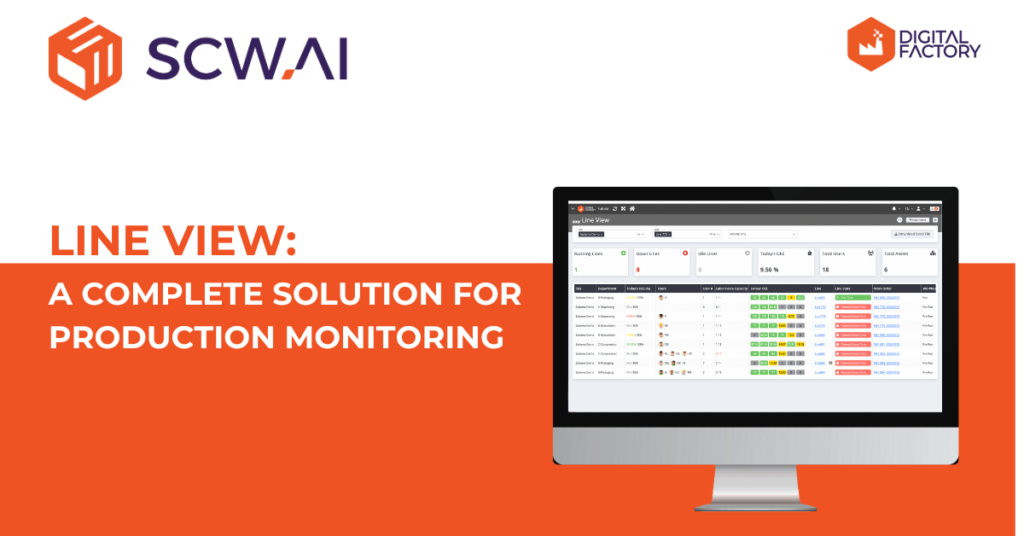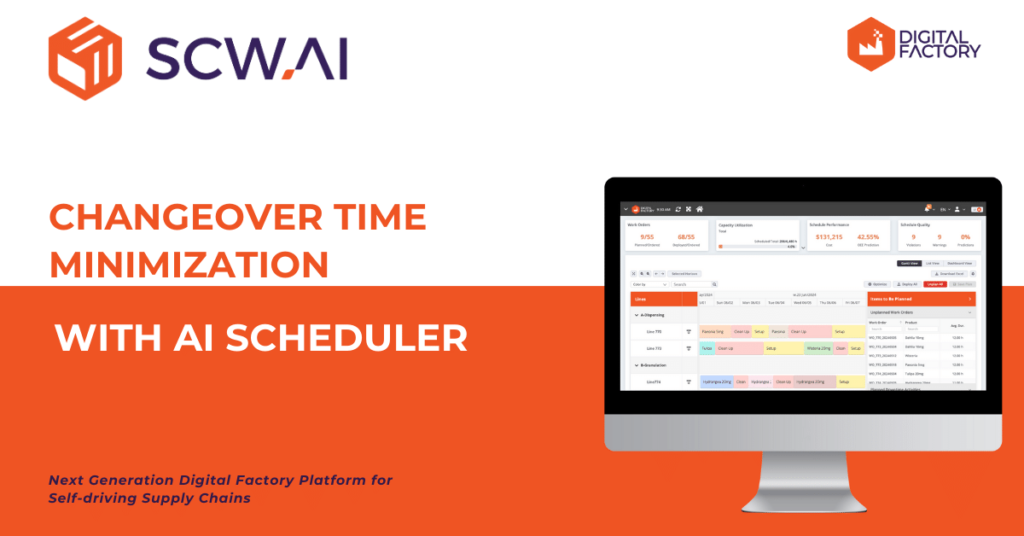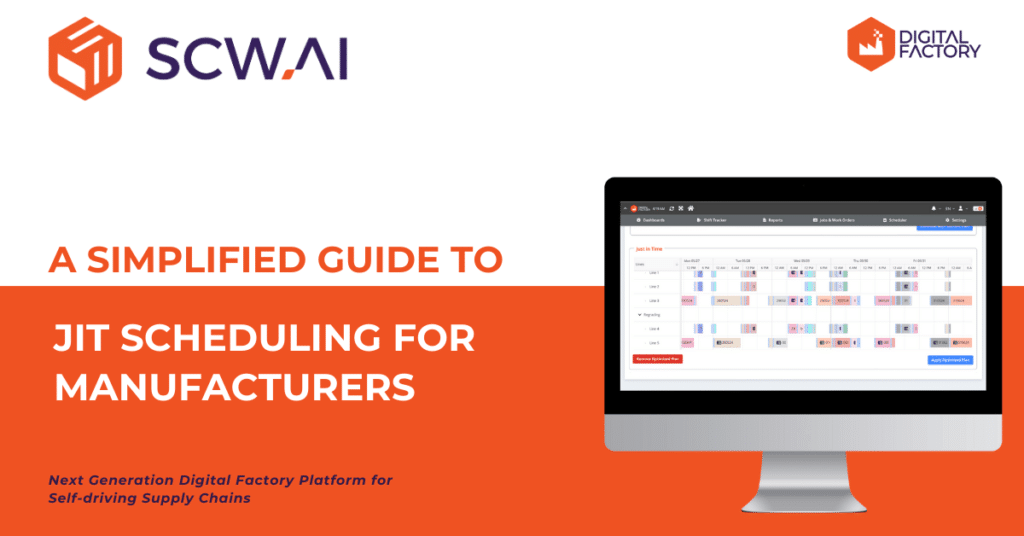A Deloitte study on smart factories has highlighted a transformative path for doubling output without requiring substantial capital investment. The key lies in strategic investments in Industry 4.0 technologies, which unveil and address longstanding bottlenecks that have often remained hidden from manufacturing managers and executives. Without improved factory visibility, numerous bottlenecks on the shop floor go unnoticed, limiting the likelihood of identifying root causes and implementing effective strategies to address them promptly.
SCW.AI’s Station View feature, incorporated into Global and Site Views, delivers machine-specific insights about shop floors, facilitating the seamless identification of bottlenecks. This article will outline the features of Station View and present its use cases to underscore the advantages of this tool.
Station Level Real-Time Production Monitoring

A production line is a cohesive assembly of semi-independent units called stations, typically machines, working collaboratively to accomplish a manufacturing task, such as packaging. Inefficiencies in line performance are often tied to persistent bottlenecks at the station level, disrupting the smooth flow of production. For instance, unplanned downtime for a thermoforming machine can substantially decrease the overall equipment effectiveness (OEE) of the production line, as it directly impacts subsequent processes such as the box folding machine that handles the output from the thermoforming machine.
SCW.AI’s Station View enables line leaders to pinpoint inefficiencies in production by offering real-time data on:
Status of Stations
Line leaders can monitor real-time data from their factories on a lifelike floor plan simulation (see video below for designing a floor plan), enabling them to pinpoint areas of concern such as idle production lines or those exhibiting low OEE. For more detailed information, line leaders can delve into specific details by clicking on the relevant line, leading them to a station-level view with a realistic line plan for more in-depth analysis.
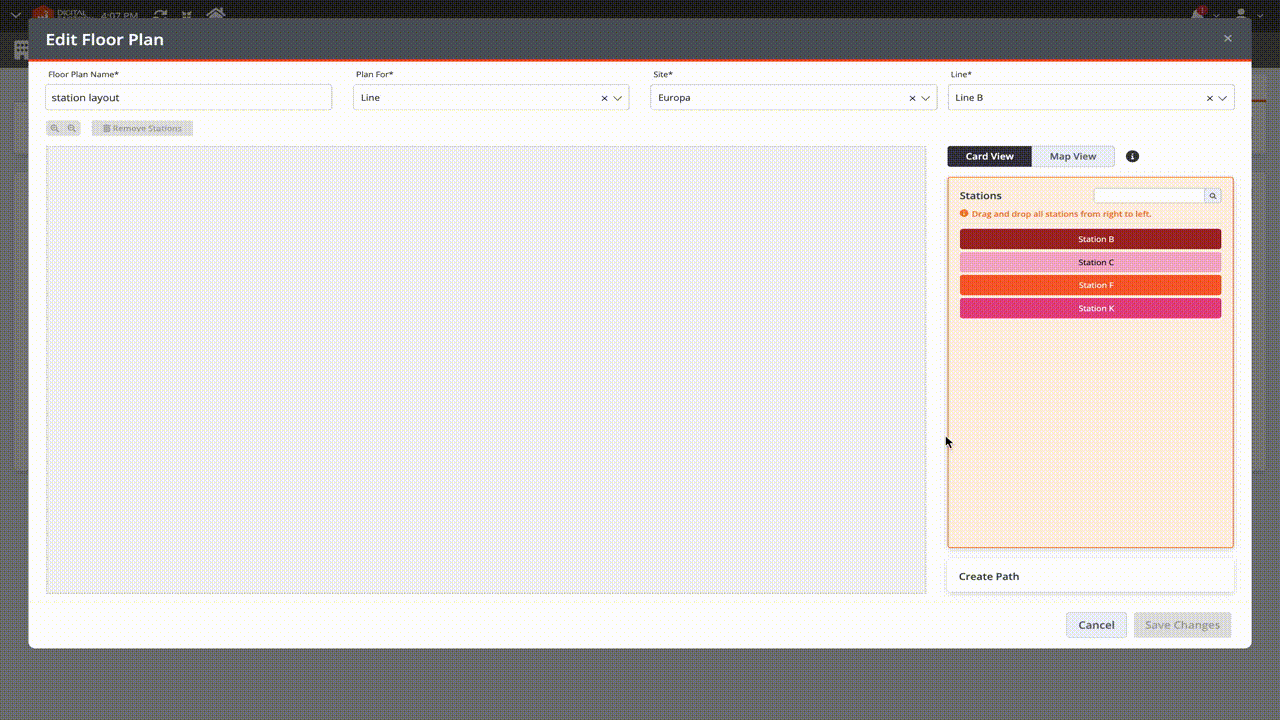
Scrap Count of a Specific Station
Executives can assess the quality of production at a machinery level by reviewing scrap counts for each station. For a more comprehensive evaluation, users can assign unique multipliers to each machine (see image below). Thus, line leaders can have accurate information regarding scrap counts/ good counts. This data is collected with no manual effort thanks to smart sensors and IoT tools.

In this way, line leaders can efficiently pinpoint stations that exhibit a correlation with scrap counts. For example, as illustrated in our image titled “An Example of Station View,” it is evident that Station A and Station B contribute significantly to the scrap counts. This observation prompts workers to take necessary actions, such as maintenance, to address the bottleneck.
An Example of Station View:

Cycle time
Line Leaders can observe the production rate per minute of each station, providing crucial information for assessing performance losses or predicting whether a work order will be completed before the due date or not. This metric offers insights into the speed of production, facilitating a thorough assessment of overall performance.
In general, a production line’s speed is constrained by its slowest machine, as they are interdependent. As depicted in the “An Example of Station View” image, the line’s speed is recorded as 2.57 units per unit, primarily influenced by Station B’s machine speed at that rate. This identification signals a bottleneck in Station B, requiring attention from the maintenance team.
Global View to Station view
SCW.AI is dedicated to the core objective of producing comprehensive reports that not only identify lucrative opportunities but also shed light on the inherent bottlenecks faced by manufacturers. With this perspective in mind, we begin by offering a general overview of production, enabling managers to delve deep into the details to identify the root causes of these bottlenecks. This involves presenting data at both global, site and station level.
The difference in focus serves to address different business problems. For instance, with a quick glance at the global view, you can determine whether your factory in the US or Europe is utilizing its resources more effectively. Nevertheless, to understand why your factory outperforms the other, a meticulous analysis, potentially even on a line-by-line or station-by-station basis, may be required. SCW.AI’s Global View, Site View, and Station View are designed with this perspective in mind.
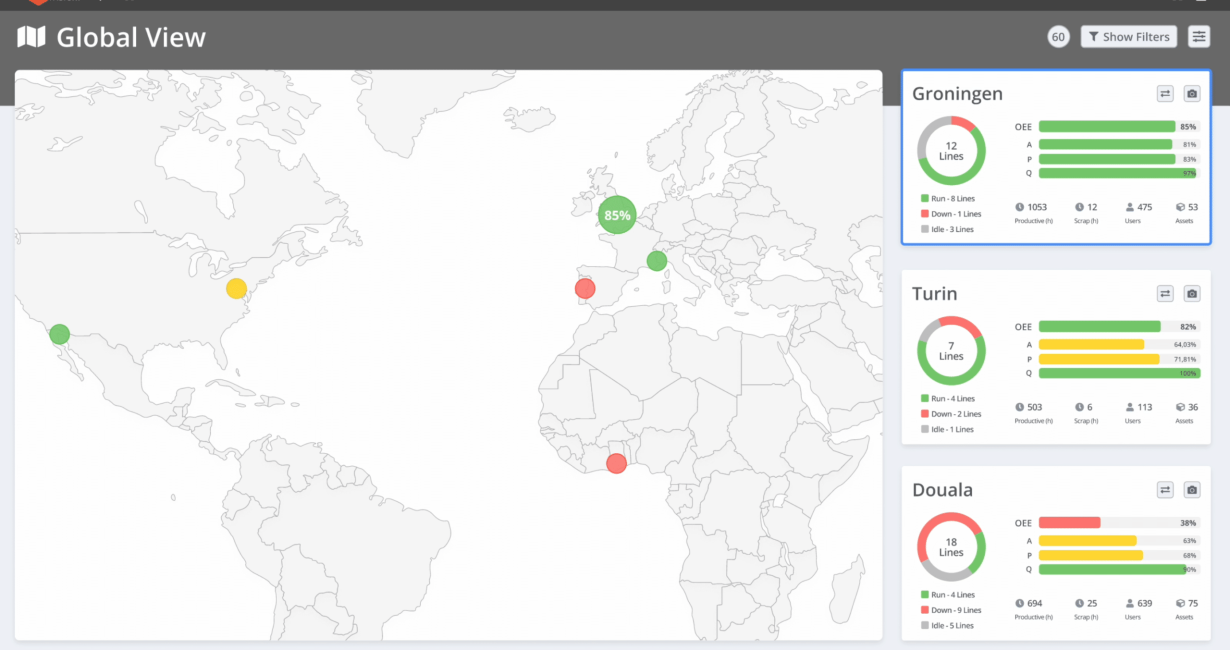


Top 3 Station View Use Cases
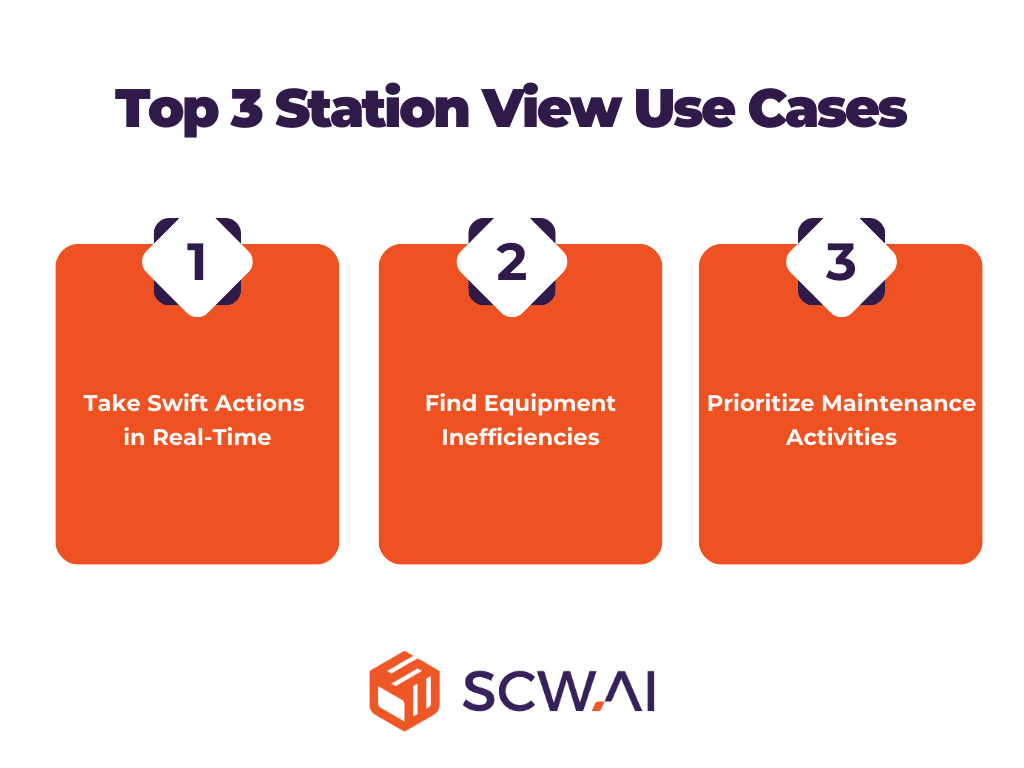
1. Take Swift Actions in Real-Time
Thanks to the Station View, line leaders can monitor the factory at a machinery level 24/7 from any location with internet access. This enhances the agile decision-making capacities of your factory. Starting from the Site View level, personnel can promptly identify if the OEE of the factory is lower than the average, which might indicate unplanned downtime or speed losses for some lines. By switching to the line level,supervisors can determine which line or lines cause a drop in average OEE. Subsequently, by utilizing the station level, line leaders can find out which equipment is working slowly or is down without visiting the shop floor.
After determining the bottleneck, line leaders may choose to address it by increasing workload (maybe overwork) if the current takt time indicates a latency in production scheduling, which can cause overdue and potential OTIF penalties. Another option might be dispatching the maintenance team to address and rectify issues with the malfunctioning machines.
2. Find Equipment Inefficiencies
Line leaders can identify chronic issues by reviewing the Station View data. For example, if the same equipment is frequently linked to downtime, they may consider replacing them or implementing other measures to address this bottleneck.
An innovative step to enhance equipment lifespan involves incorporating machine learning-driven predictive maintenance. Algorithms predict potential machine failures by analyzing metrics such as mean time to failure, mean time between failures, mean time to repair, and more.
Explore our Maintenance Performance Report for real-time insights into these metrics. This allows you to take a proactive approach to equipment maintenance and make informed decisions.
3. Prioritize Maintenance Activities
Often, a crucial phase in the production process involves utilizing dedicated stations to efficiently execute specific tasks and fulfill targeted work orders along the production line. For example, a packaging work order might involve the operation of thermoforming, box folding, and packer machines but not bundler machines. In such cases, it is prudent to defer maintenance of the bundler machine since it will not be utilized in the short term. Conversely, prioritizing maintenance for thermoforming and box folding machines can be beneficial.
Station View highlights machines that will not be used to process specific work orders in gray, allowing executives to make maintenance decisions more strategically.
End to End Digital Factory Transformation with SCW.AI’s Digital Factory Platform
SCW.AI’s Digital Factory Platform ensures scalable and affordable digital transformation for your shop-floor to meet the unique demands of the manufacturing industry. The platform includes the following solutions:
- Visibility and Productivity Solutions: Modules like OEE Tracker, Labor Tracker, Asset Tracker, and more assist executives to minimize downtime and cost of good sales by making shop-floor visible with intuitive dashboards and real-time data including station level view.
- Paperless Quality Solutions: SCW.AI designs GMP compliant tools such as Digital Logbook specifically for pharmaceutical manufacturers to minimize risk and cost of quality and improve corporate compliance.
- Agile Planning Solutions: Our advanced planning and scheduling systems with AI-driven Scheduler, Schedule Adherence Report and Maintenance Performance Report help companies reduce cycle times, enhance supply chain resilience and reduce OTIF penalties by optimizing scheduling and maintenance activities.
- IoT Hub: Our HexBoxes enhance visibility of factories in real-time by automating the collection of shop-floor, equipment, and labor data. This real-time input serves as the cornerstone for making fast and effective decisions.
- AI Hub: SCW.AI designs scheduler, predictive maintenance and digital twin algorithms to assist manufacturers in automating decision-making processes.
To find out comprehensive information about Digital Factory Platform you can book a demo now!
